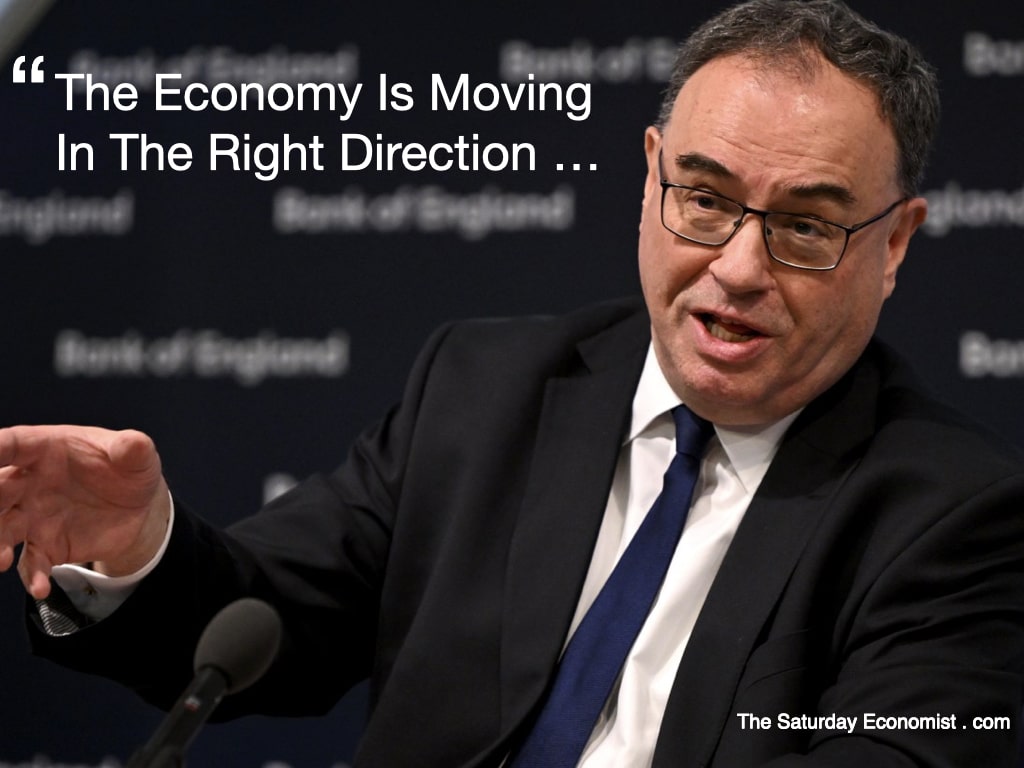|
At the MPC meeting this week, the committee voted by 6 votes to three, to hold base rate at 5.25%. So much for group think, of which the Bank is oft criticized, two members voted for a rate hike and one voted for a rate cut.
Swati Dhingra, voted in favour of a 0.25-percentage-point reduction to the base rate, marking the first vote for monetary easing in almost three years. Dhingra thinks the Bank is at risk of over-tightening if it waits for data showing sharp declines in wage growth. Jonathan Haskel and Catherine Mann, on the other hand, voted for another rate rise to 5.5 per cent. They think that wages (rising by 6.5%) are still dangerously high. A majority of six MPC members, including Andrew Bailey, the governor, and Huw Pill, the chief economist, voted for another month of no change. Andrew Bailey delivered a mixed message to the markets, pointing out that the MPC was "not at the point where we can lower rates'. Nevertheless, he said, the main question facing rate setters at future meetings was 'how long we need to maintain this position". This is a significant change in stance. The MPC has removed its previous guidance relating to the need for more rate rises, suggesting that the Bank's next move would be a reduction in borrowing costs. In the US, this week, the Fed also shifted its guidance to financial markets to remove its previous language on the need for more monetary tightening. Chairman Jerome Powell opened the door to rate cuts, without specifying when they were likely to happen. A cut as early as May remains a possibility. Markets were previously exciting about a possible March cut. Governor Bailey hinted at a potential rate cut, markets assume in June. This would mark the first easing of monetary policy since 2020. Andrew Bailey said, "The economy is "moving in the right direction", possibly towards a position that could cause the Bank of England to consider cutting interest rates. The obsession with the "Suite of Models" continues. The "models" suggest inflation may hit the 2% target in the second quarter of the year. Thereafter, the headline CPI rate is expected to rise in the latter half of 2024 closing at just under 3%. (The "models" are also pretty optimistic about earnings and wage settlements). The Governor called for caution, suggesting that while rate cuts are on the horizon, they may not be as substantial as financial markets anticipate. In a later statement, Chief Economist How Pill decided to cloud the market view further. The day after the statements from the Governor, Hugh Pill indicated the Bank may have to raise interest rates, as a next step, instead of cutting them. Pill highlighted potential risks, such as developments in the Middle East, that could necessitate a response from the Bank. He also pointed to sustained inflationary pressures from wages, the job market, and service industry prices as reasons to be cautious about rate cuts. Despite market expectations for a rate cut to 5% by May or June, Pill emphasized that the Bank does not have sufficient evidence yet to support a reduction in rates. "There are dangers from developments in the Middle East for example, that if they were to become manifest we would need to respond to, and that would certainly alter my assessment of the speed or even the direction of future movements in rates". So what can we make of it all? Our overall forward guidance outlook remains unchanged. We expect a series of three base rate cuts in the current year possibly beginning, in May or June. We model base rates at 4.5% in the final quarter. Don't be too surprised if inflation fails to perform as the Bank's ""suite of models" suggest. Models are like that ...
0 Comments
Leave a Reply. |
The Saturday EconomistAuthorJohn Ashcroft publishes the Saturday Economist. Join the mailing list for updates on the UK and World Economy. Archives
July 2024
Categories
All
|
| The Saturday Economist |
The material is based upon information which we consider to be reliable but we do not represent that it is accurate or complete and it should not be relied upon as such. We accept no liability for errors, or omissions of opinion or fact. In particular, no reliance should be placed on the comments on trends in financial markets. The presentation should not be construed as the giving of investment advice.
|
The Saturday Economist, weekly updates on the UK economy.
Sign Up Now! Stay Up To Date! | Privacy Policy | Terms and Conditions | |

 RSS Feed
RSS Feed